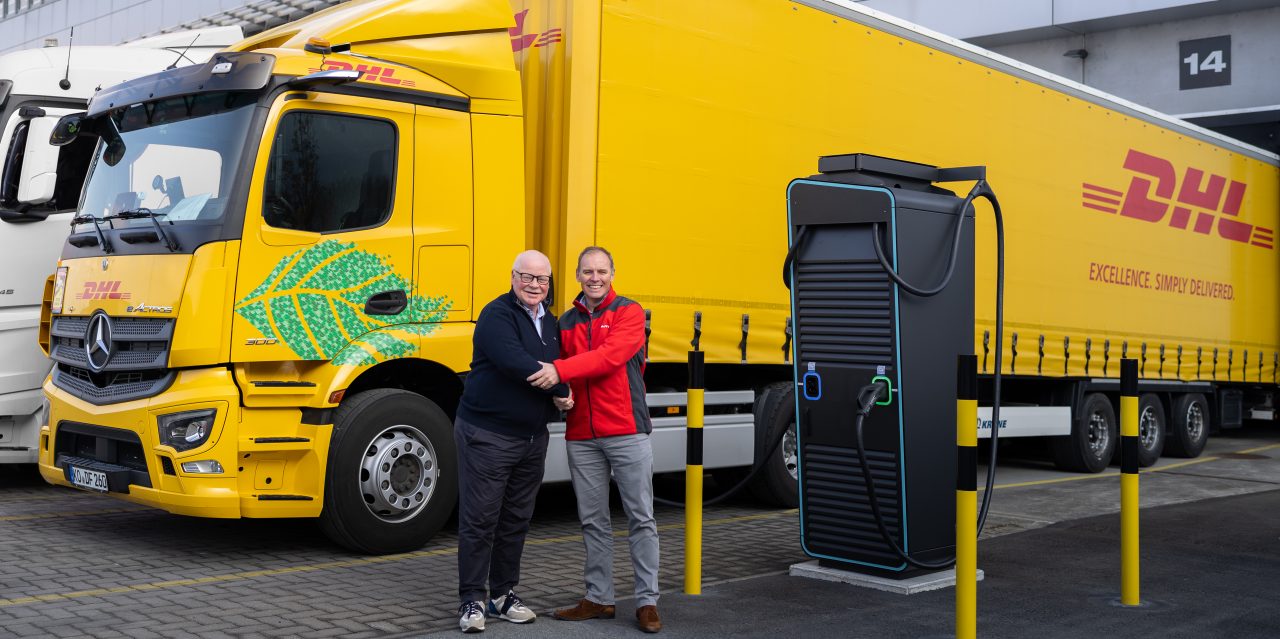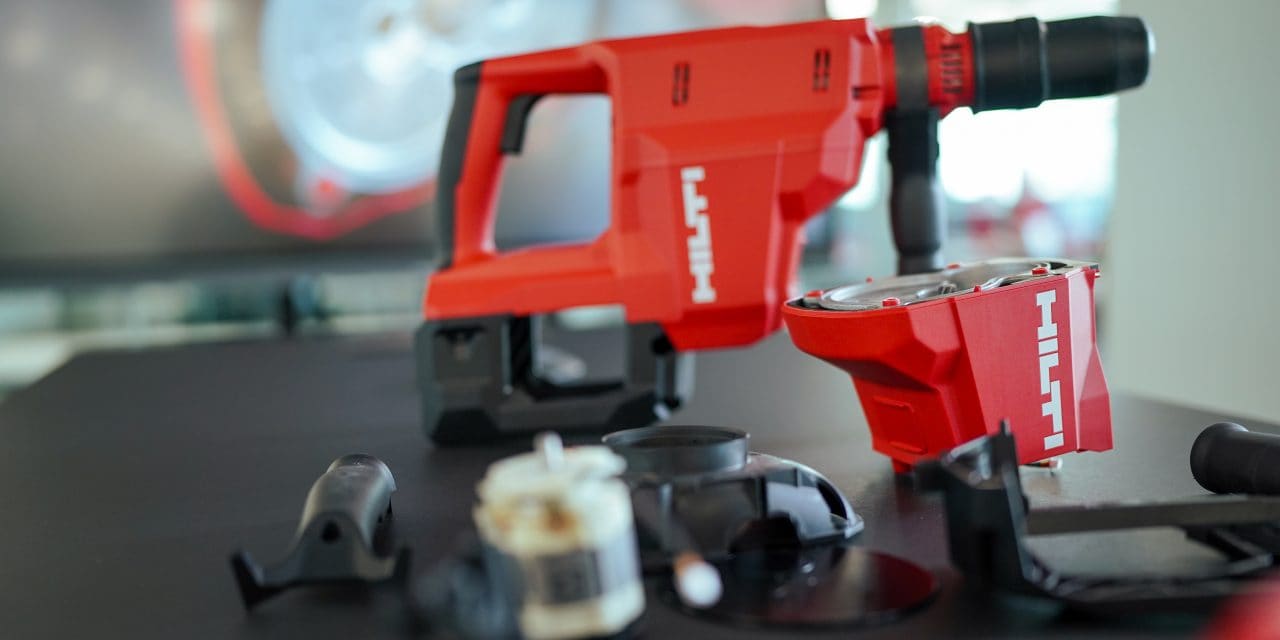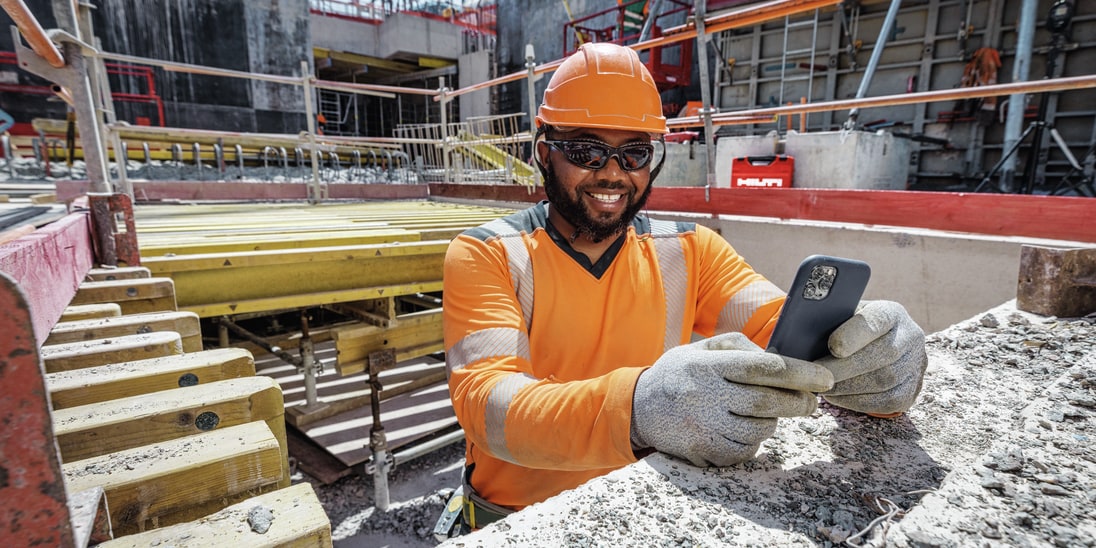- Home
- Company
- Newsroom
- Hilti Stories
- Transforming 30 Million Red Cardboard Boxes
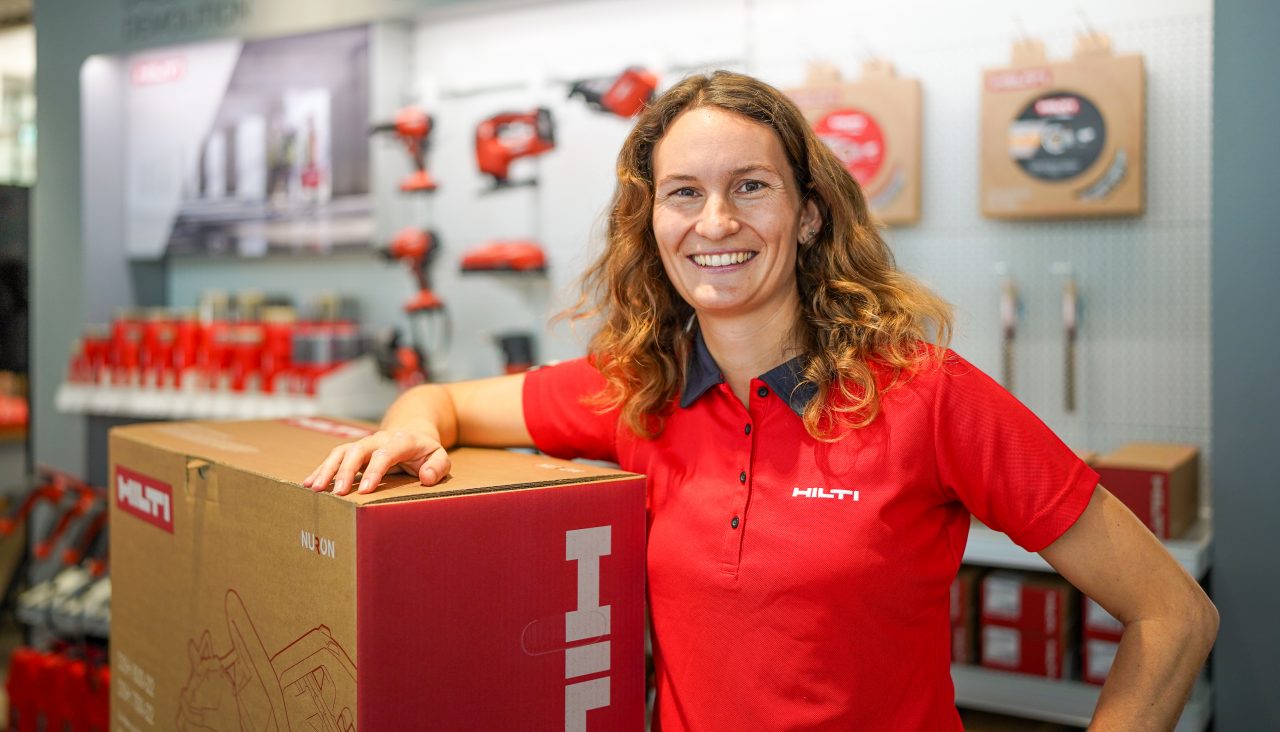
Transforming 30 Million Red Cardboard Boxes
We are transforming 30 million cardboard product boxes to enhance their sustainability.
Written by Manuela Mylonas | May 21, 2025
Our product packaging is as versatile as the products themselves. Regardless of the type, we prioritize secure and safe packing for all orders, big or small. In line with our ambitious goal to achieve net-zero emissions by 2050, which has been validated by the Science Based Targets initiative (SBTi), we are examining every aspect of our operations to reduce carbon emissions. One key initiative focuses on our packaging. We are transforming 30 million cardboard boxes to enhance their sustainability.
To gain a deeper understanding of this initiative, we asked Nadine Sessinghaus, project manager for Sustainable Packaging at Hilti, for her insights into the new packaging. She led this project and is now overseeing its global rollout.
Nadine, can you tell us why Hilti has changed to new, more sustainable packaging?
We wanted to ensure our packaging aligns with our environmental goals. New packaging is one of the many steps we are taking, as we are looking into every aspect to reduce CO₂ emissions in order to achieve net-zero emissions by 2050. It's a journey we are passionate about, and we are excited to see the positive impact of these changes.
Can you highlight the significant changes made to the packaging materials and design?
Our products come in a variety of different packaging types. For this initiative, we focused specifically on cardboard product packaging. Previously, we used white bleached paper, typically made from virgin paper, to achieve a comprehensive red look.
The new cardboard packaging now consists of a single material, with a recycled brown outer layer that contains a high amount of recycled material, replacing the external layer of white bleached paper. Two-color printing, in red and white, is now only partially applied.
By eliminating plastic wrapping and using only paper labels, the packaging is now 100% recyclable. With a current average of 70% recycled content, the new design aims for 100% recycled material in the future, reflecting our commitment to continuous improvement.
It is impressive to note that these changes save 700 tons of CO₂ annually and significantly reduce water usage.
THE NEW CARDBOARD PACKAGING UNDERGOES HIGH QUALITY ASSESSMENT DURING ITS PRODUCTION PROCESS.
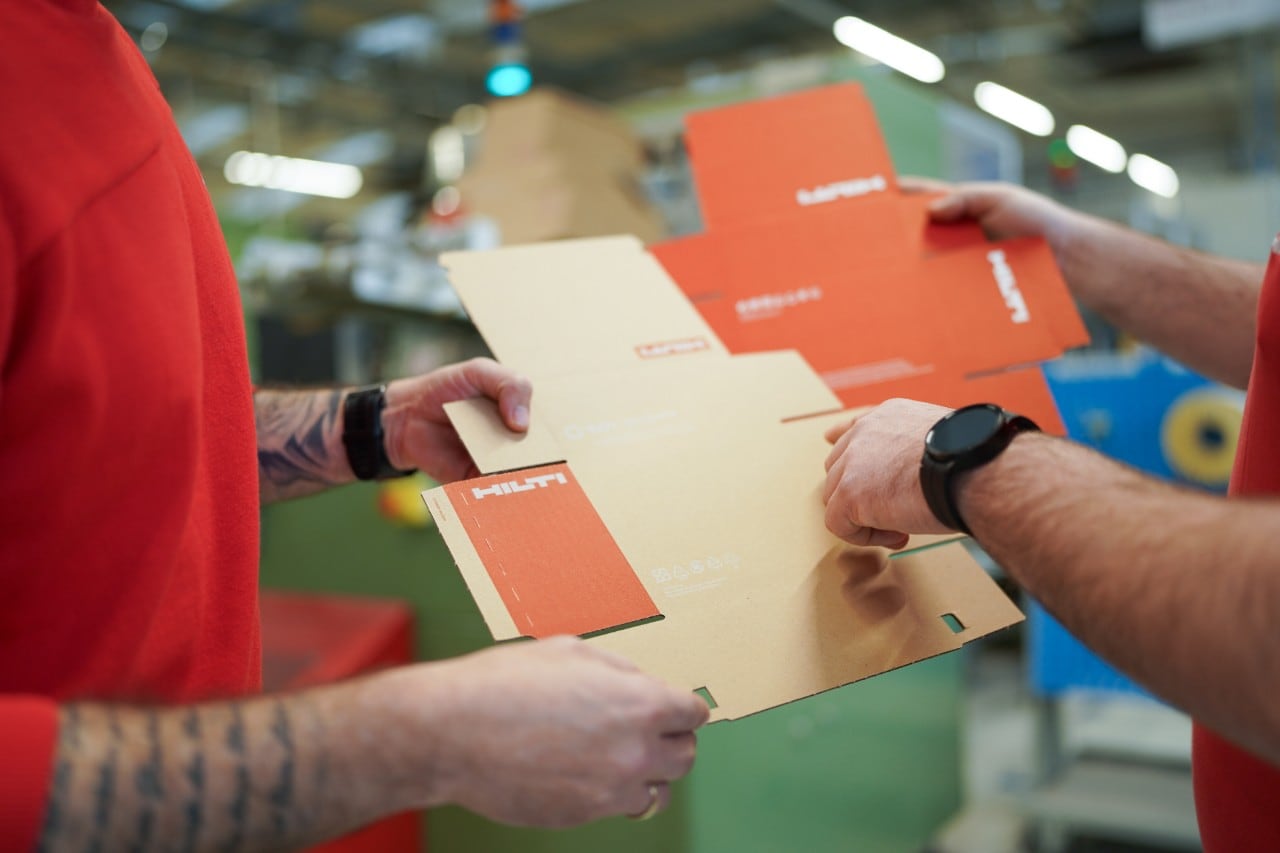
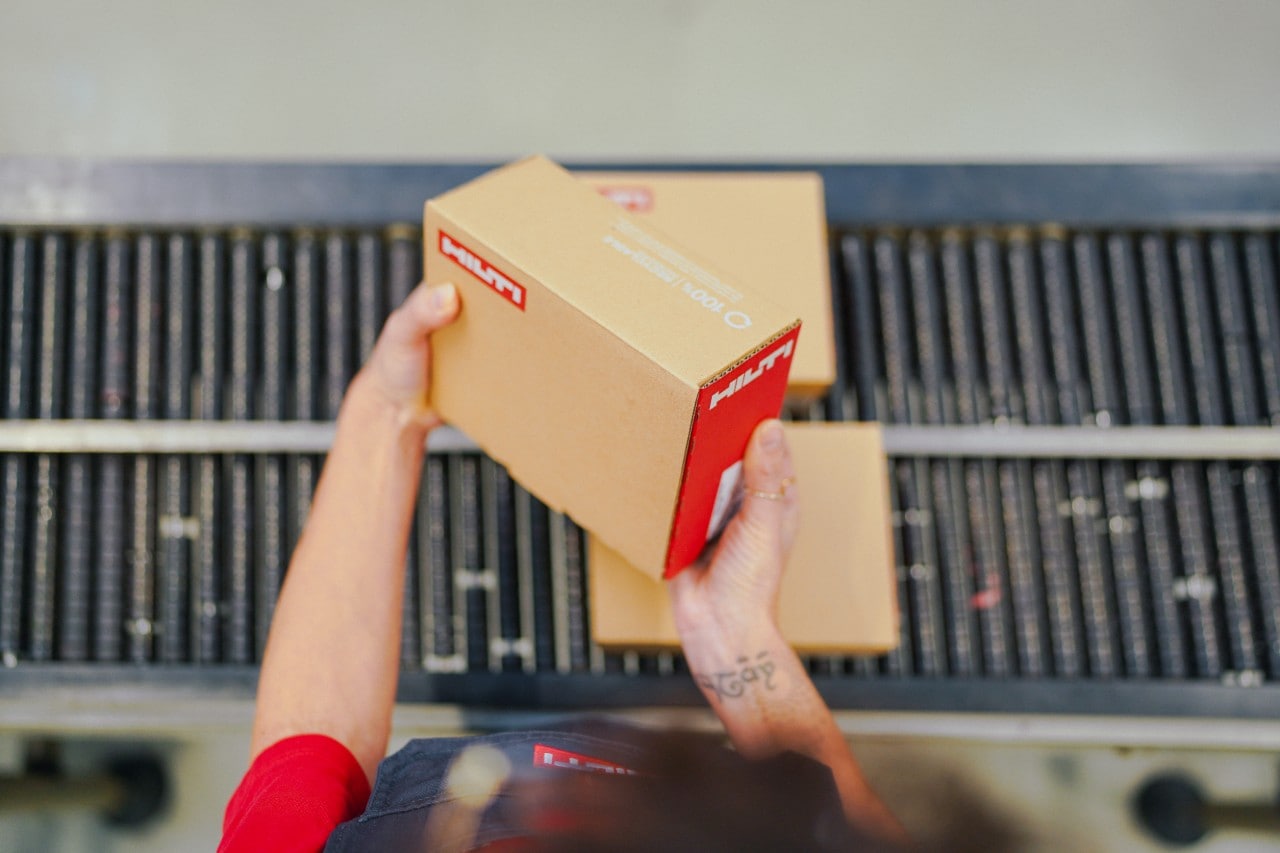
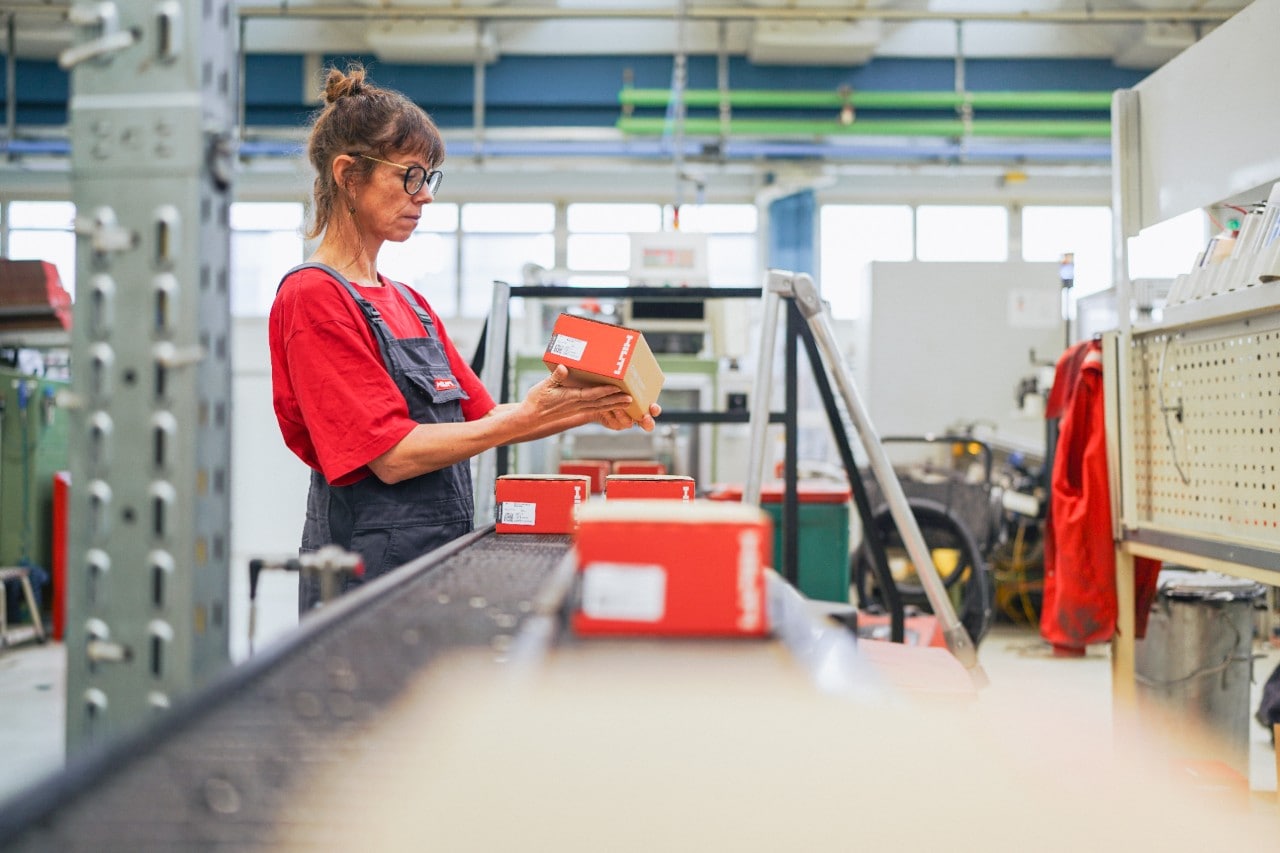
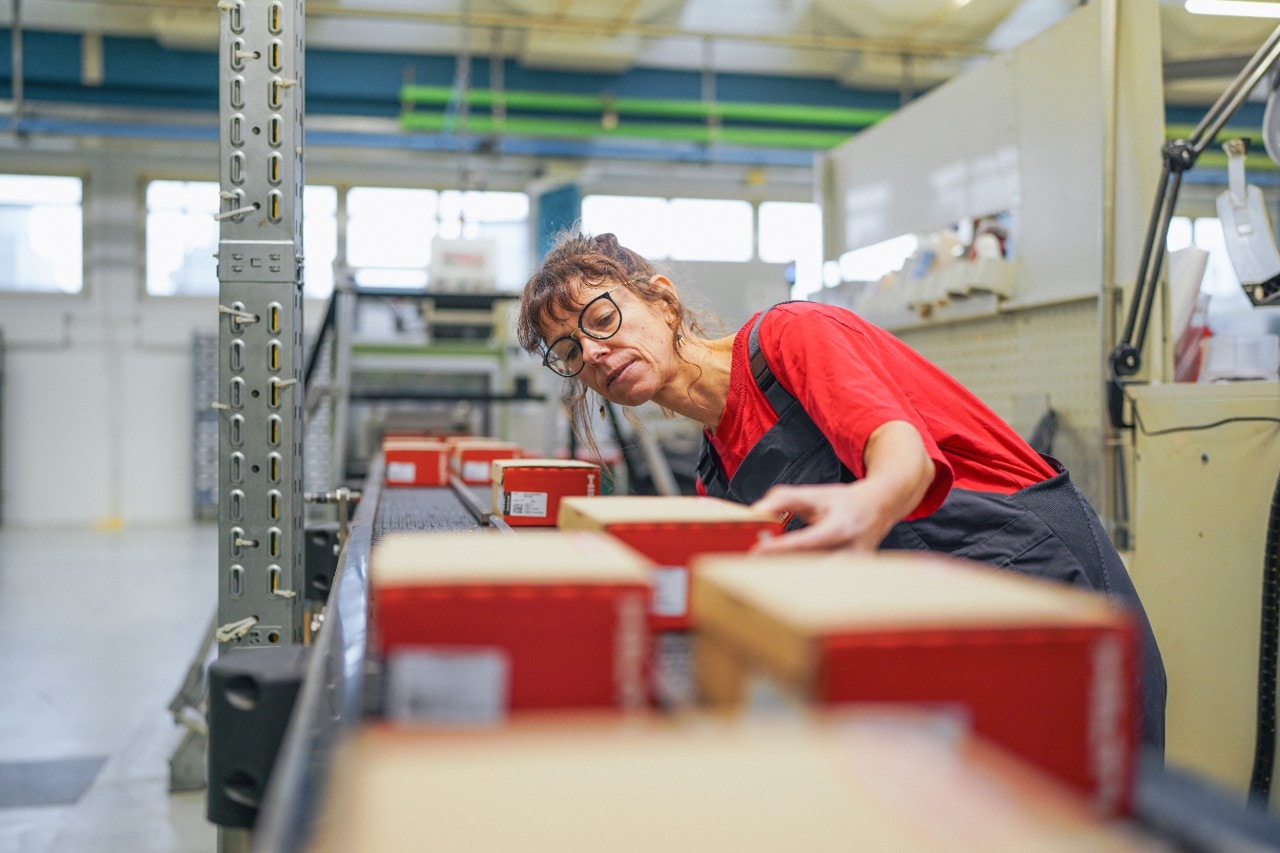
When will our customers see the new packaging?
The first boxes with the new look can already be spotted in some markets. Our approach to introducing the new packaging is both strategic and environmentally conscious. We won’t discard existing packaging material, but will use it until it has been depleted.
The transition to our new packaging will take some time. Depending on inventory and demand, customers should begin seeing the new packaging soon.
Are there other packaging initiatives besides cardboard?
Yes. In recent years, we have implemented several impactful sustainability projects aimed at packaging. At the moment, we are actively pursuing over 20 additional packaging initiatives.
To me, the Hilti tool case initiative stands out in particular. This project is a lighthouse example when it comes to closed-loop recycling. By incorporating recycled materials from our old tool cases into the production of new ones, we are reducing waste and using resources smartly.
NADINE SESSINGHAUS IS STOCKING THE FIRST HILTI STORES WITH THE NEW CARDBOARD SALES PACKAGING.
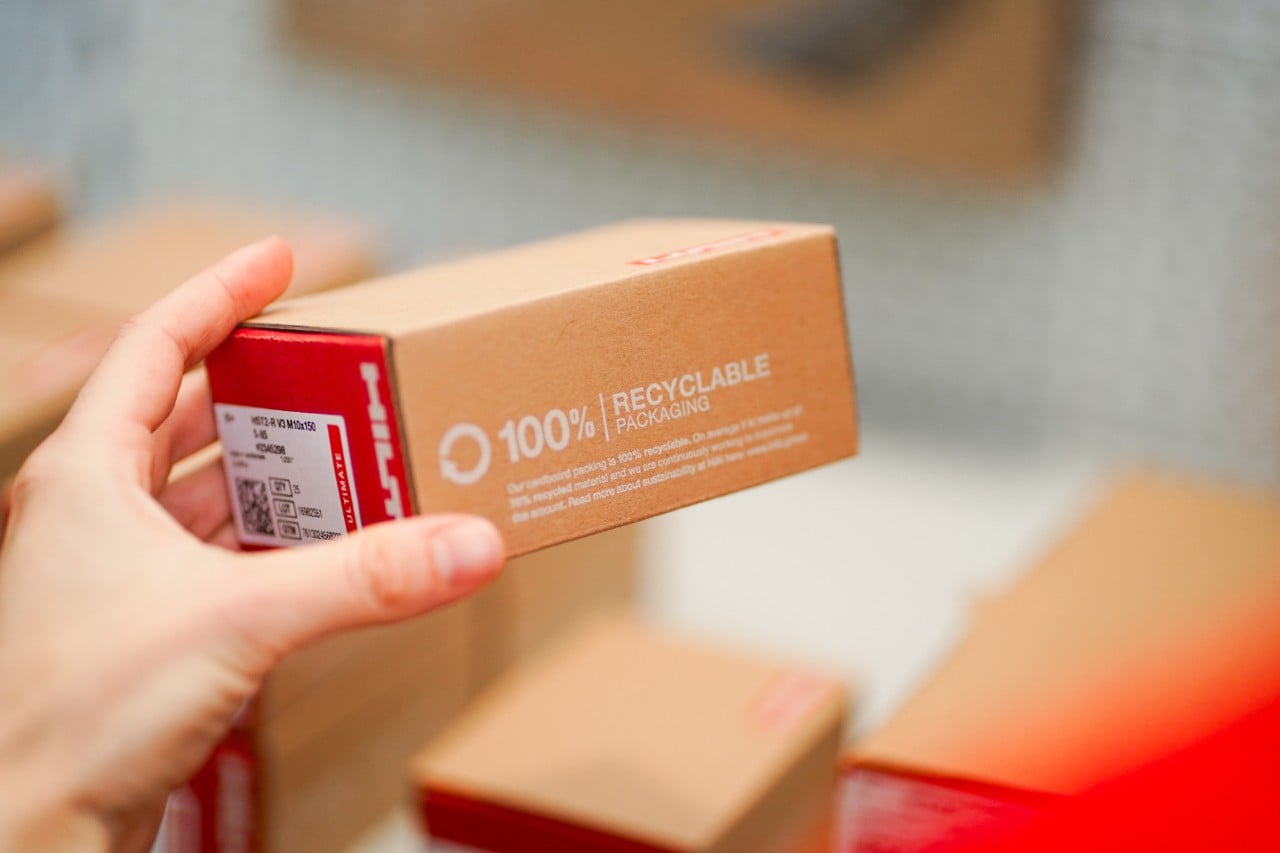
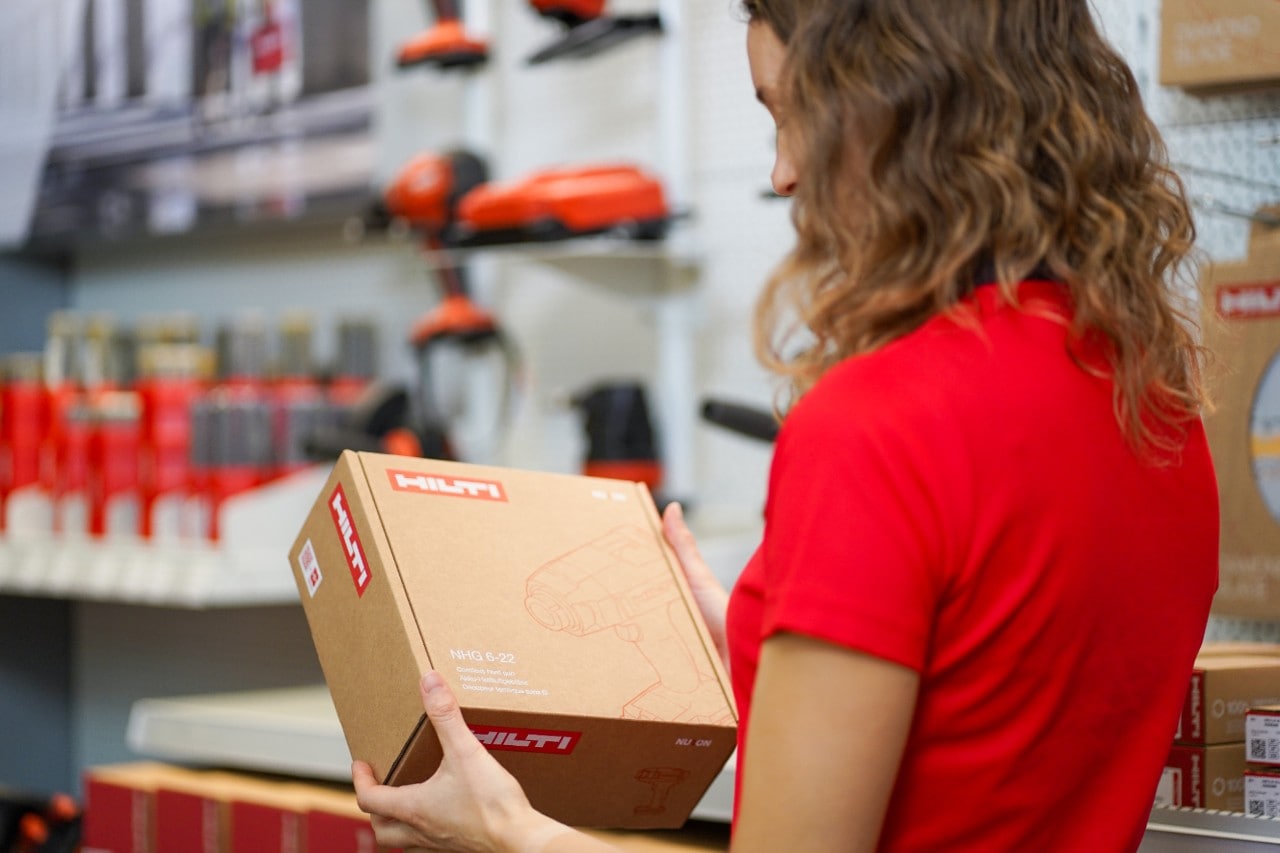
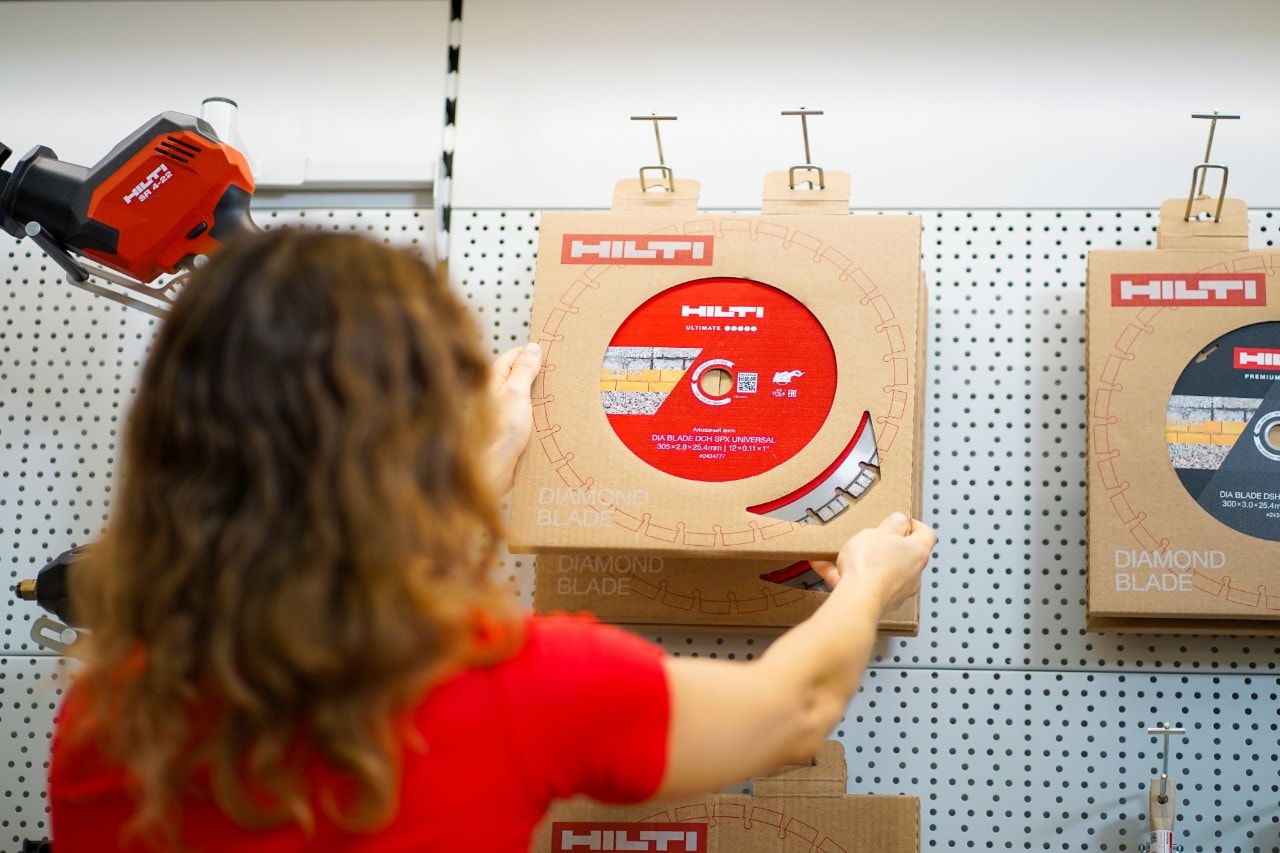
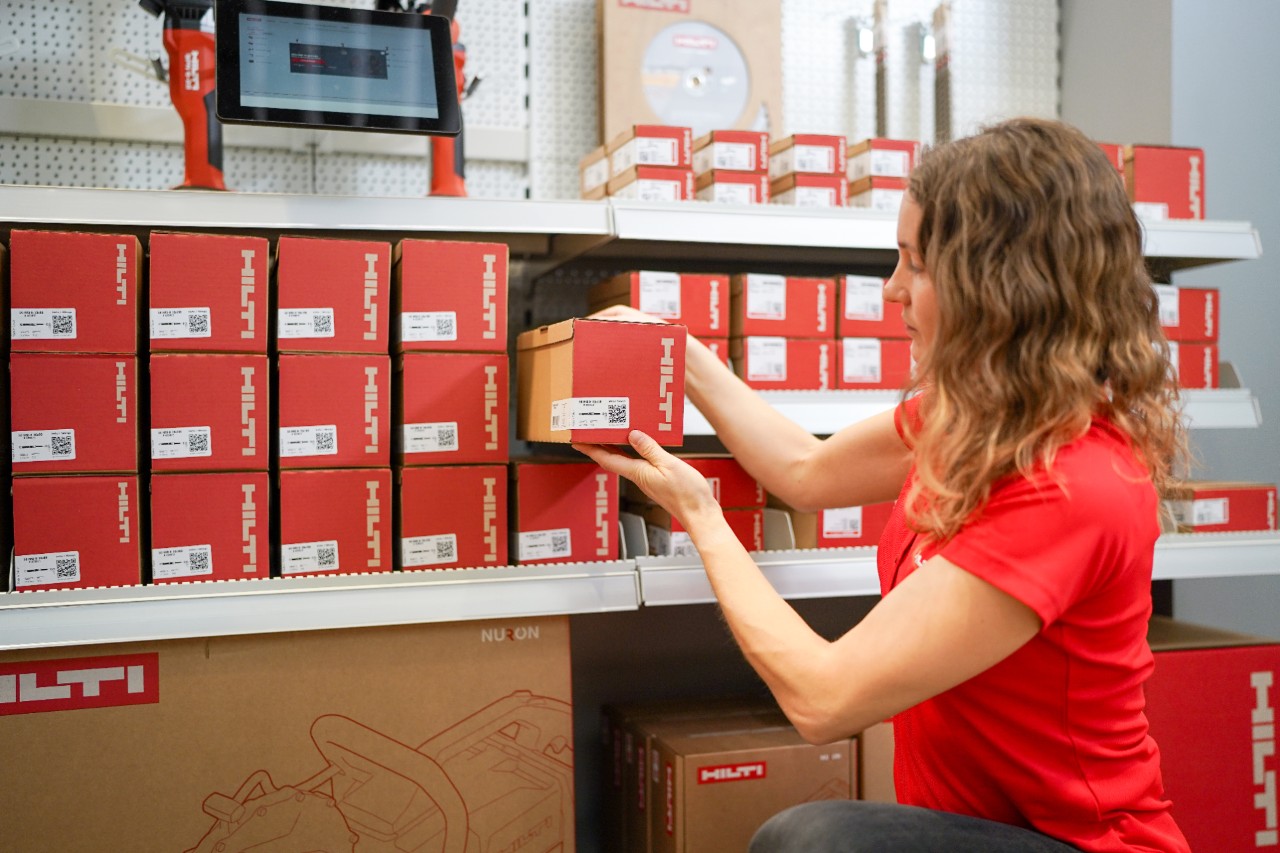
Can you give insights into some other developments that we can look forward to?
We are continuously working on driving innovation in sustainable packaging. Our general packaging approach focuses on high fill rates for product packaging, transport packaging and bulk packaging, as well as the reuse of packaging materials to reduce waste and environmental impact.
To share a concrete example of a smaller initiative, we are changing the clips that support CX drill bit packaging from a plastic to a new cardboard hanger. This change will result in 33 tons of CO₂ savings annually for all CX drill bits.
All of our packaging initiatives are focused on three main material categories: plastic, paper and cardboard. We are exploring new materials, improving recyclability and increasing the use of recycled content to further reduce our environmental footprint. By taking one step at a time, we are steadily pushing forward. Every small step counts.
